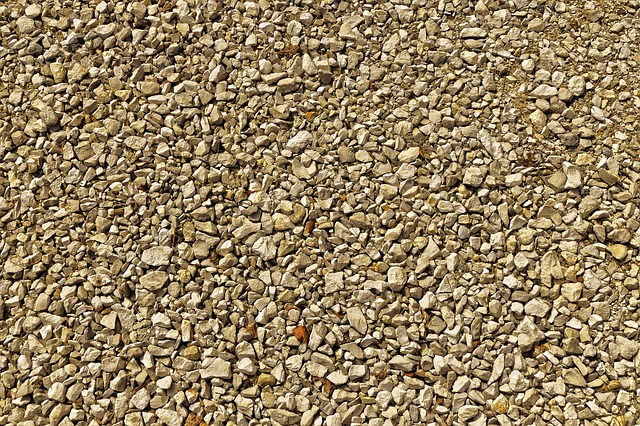Gravel in construction
Gravel is a loose aggregation of small, variously sized fragments of rock. It has a wide range of applications in the construction industry.
The weathering and erosion of rocks is the natural process by which gravel deposits are formed. Gravel can also be produced in quarries known as gravel pits, where rocks such as sandstone, limestone and basalt are crushed down to size. Gravel particle sizes range from 2 mm to over 60 mm, and are available in a range of colours, textures and stone types.
Gravel, along with sand, is used for the manufacture of concrete, as well as for mixing with asphalt as part of road construction. It can be used as the base layer for roads before being covered with tarmac, and is also commonly used to surface roadways, especially those in rural areas and in icy conditions. It can also be used to as part of roof coverings.
Gravel can be used along with pebbles as a form of render known as pebbledash which is used for the external walls of a building in which the top coat is textured to create a rough finish. For more information, see Pebbledash.
Gravel can be used in the filtration of water, where it acts as a natural filter holding back precipitates which may contain impurities as well as other sand-sized particles. The angularity and hardness of gravel makes it resistant to water erosion.
Gravel is commonly used for landscaping applications, such as on driveways, walkways, or as a decorative filler over soil instead of grass.
[edit] Related articles on Designing Buildings Wiki
Featured articles and news
The UK’s largest air pollution campaign.
Future Homes Standard, now includes solar, but what else?
Will the new standard, due to in the Autumn, go far enough in terms of performance ?
BSRIA Briefing: Cleaner Air, Better tomorrow
A look back at issues relating to inside and outside air quality, discussed during the BSRIA briefing in 2023.
Restoring Abbotsford's hothouse
Bringing the writer Walter Scott's garden to life.
Reflections on the spending review with CIAT.
Retired firefighter cycles world to raise Grenfell funds
Leaving on 14 June 2025 Stephen will raise money for youth and schools through the Grenfell Foundation.
Key points for construction at a glance with industry reactions.
Functionality, visibility and sustainability
The simpler approach to specification.
Architects, architecture, buildings, and inspiration in film
The close ties between makers and the movies, with our long list of suggested viewing.
SELECT three-point plan for action issued to MSPs
Call for Scottish regulation, green skills and recognition of electrotechnical industry as part of a manifesto for Scottish Parliamentary elections.
UCEM becomes the University of the Built Environment
Major milestone in its 106-year history, follows recent merger with London School of Architecture (LSE).
Professional practical experience for Architects in training
The long process to transform the nature of education and professional practical experience in the Architecture profession following recent reports.
A people-first approach to retrofit
Moving away from the destructive paradigm of fabric-first.
International Electrician Day, 10 June 2025
Celebrating the role of electrical engineers from André-Marie Amperè, today and for the future.
New guide for clients launched at Houses of Parliament
'There has never been a more important time for clients to step up and ...ask the right questions'
The impact of recycled slate tiles
Innovation across the decades.
EPC changes for existing buildings
Changes and their context as the new RdSAP methodology comes into use from 15 June.
























